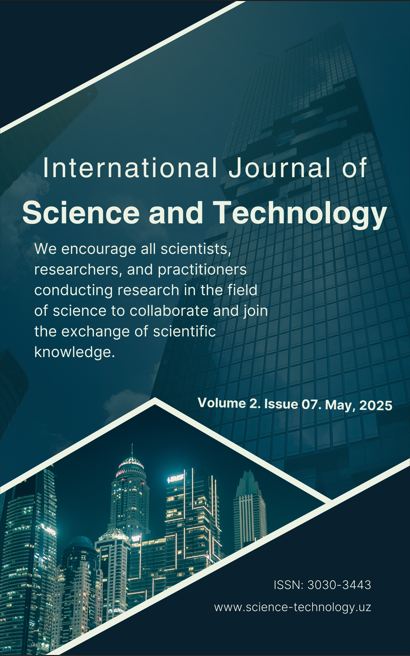ОРГАНИЗАЦИЯ ТВОРЧЕСКОЙ ДЕЯТЕЛЬНОСТИ СТУДЕНТОВ В УСЛОВИЯХ СМЕШАННОГО ОБУЧЕНИЯ: ВОЗМОЖНОСТИ LMS
Published 16-05-2025
Keywords
- «Смешанное обучение», LMS (система управления обучением), платформа Moodle, асинхронные и синхронные инструменты, учебная литература, чат, форум, творчество, самостоятельное обучение, деятельность преподавателя и учащихся.

This work is licensed under a Creative Commons Attribution-NonCommercial-NoDerivatives 4.0 International License.
How to Cite
Abstract
Процесс глобализации и информатизации, происходящий в мире, требует изменения содержания образования, образовательных подходов, уровня использования информационно-коммуникационных технологий в преподавании дисциплин во всех сферах жизни, в частности, в высших учебных заведениях, в результате внедрения традиционных и дистанционных форм обучения.
Современный этап развития образовательной деятельности характеризуется преобладанием информационно-коммуникационных технологий, что позволяет активизировать формы и методы традиционных подходов к образованию. Особенность современного этапа информатизации системы высшего образования заключается в том, что на первый план выдвигаются важные аспекты подготовки специалистов в высших учебных заведениях.
References
- Australian National Training Authority, Definitions of Key Terms Used in e-learning, 2003.
- Bersin & Associates. 2003. Blended Learning: What Works? An Industry Study of the Strategy, Implementation, and Impact of Blended Learning. San Francisco, CA: Pfeifer.
- Bonk, C.J., Graham, C.R. 2004. Handbook of Blended Learning: Global Perspectives, Local Designs. San Francisko, CA:Wiley.
- Colis, B. and Moonen, J., Flexible Learning in a Digital World: Experiences and expectations, 2001
- Driscoll, M. Blended learning: Let’s get beyond the hype. E-Learning, Learning and Training Newsline 2002.
- Harriman, G. 2004. What is blended learning? E-learning Resources.
- H.W.Fowler, F.G. Fowler, E. Allen Robert, The Concise Oxford Dictionary of Current English. – Print book : English : 8th ed. – Oxford : Clarendon Press ; New York : Oxford University Press, 1990.. The Concise Oxford dictionary of current English. (1990 edition) | Open Library
- Kane, G. C., & Alavi, M. (2007). Information technology and organizational learning: An investigation of exploration and exploitation processes. Organization Science, 18(5), 796–812. https://doi.org/ 10.1287/orsc.1070.0286
- K-12 Blended Teaching A Guide to Personalized Learning and Online Integration Charles R. Graham, Jered Borup, Cecil R. Short, & Leanna
- New South Wales Department of Educational and Training. Blended learning, Learning technologies, 2005
- Node Learning Technology Network. 2001. The Node’s Guide to Blended Learning: Getting The Most Ourt of your Classroom and the Internet. Available at: http://thenode.org/guides/blended/blended. pdf.
- Oliver, M., andTrigwell, K. Can ‘blended learning‘ be redeemed? E-learning and Digital Media, 2(1), 17–26., 2005
- Protector C.T. Blended Learning in Practice, available at: www.ece.salford.ac.uk/proceedings/papers/cp03rtf
- Pardede, P. (2020). Integrating the 4Cs into EFL Integrated Skills Learning. Journal of English Teaching, 6(1), 71-85.
- Shan, S., Li, C., Shi, J., Wang, L.,and Cai, H. (2014). Impact of effective communication, achievement sharing and positive classroom environments on learning performance. Systems Research and Behavioral Science, 31(3), 471-482.
- Supena, I., Darmuki, A., and Hariyadi, A. (2021). The Influence of 4C (Constructive, Critical, Creativity, Collaborative) Learning Model on Students' Learning Outcomes. International Journal of Instruction, 14(3), 873-892
- https://www.researchgate.net/publication/378853042
- https://www.researchgate.net/publication/378908509

